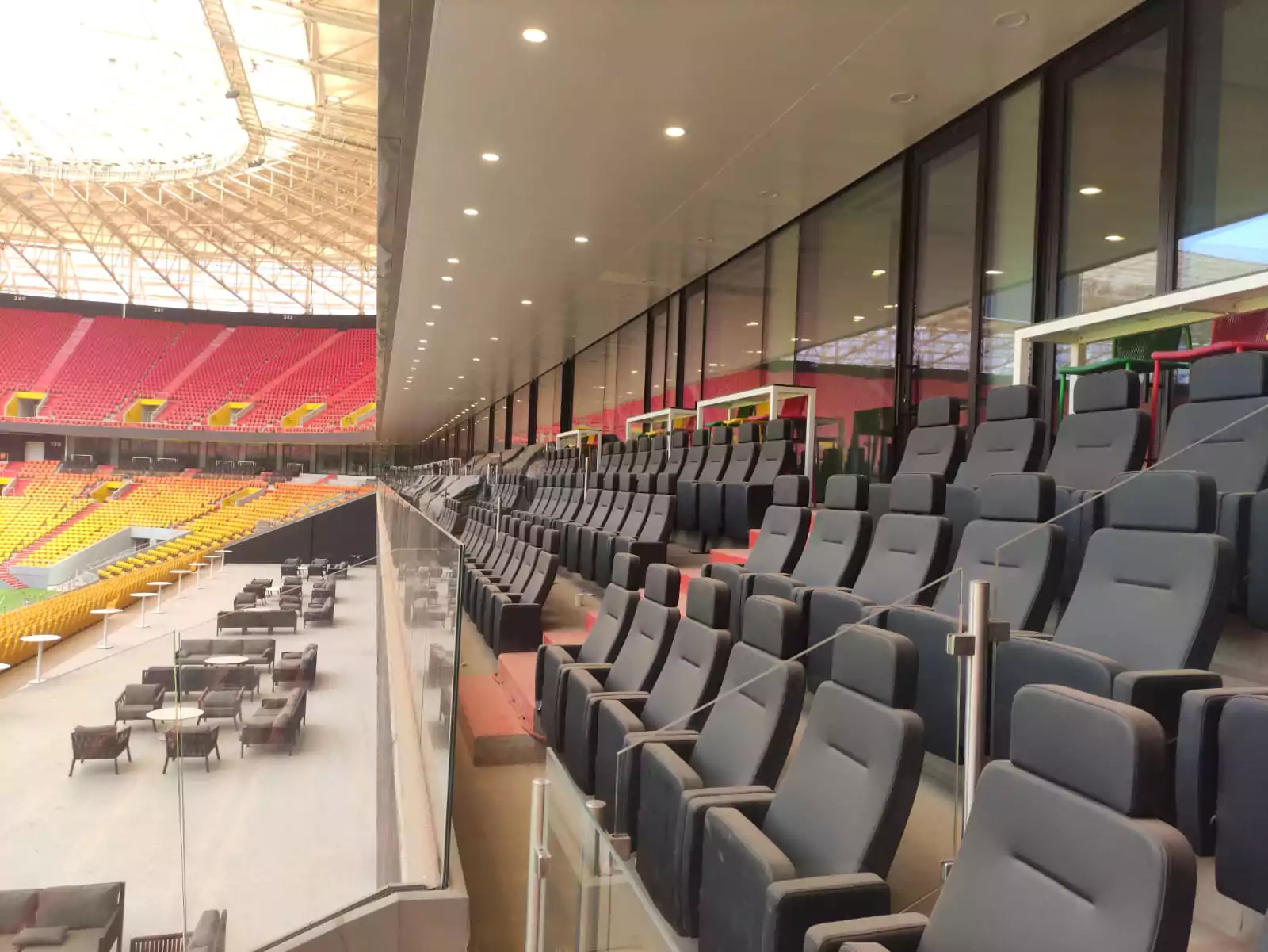VIP Stadium Seating Luxury
The Rise of VIP Stadium Seating: Redefining Luxury and Fan Experience
In today’s sports and entertainment world, VIP stadium seating has become one of the fastest-growing trends. No longer limited to traditional ticket holders, modern stadiums are investing heavily in luxury seating solutions that combine comfort, exclusivity, and revenue generation. From football arenas in Europe to new multi-sport venues in the Middle East and America, premium stadium seating is reshaping the way fans interact with live events.

Why VIP Stadium Seating Matters
Sports events are no longer just about the game. Fans increasingly look for exclusive experiences that combine luxury and convenience. This shift has made VIP seating a strategic element for stadium operators.
Key benefits of VIP seating include:
Enhanced comfort: Wider seats, leather upholstery, armrests, and ergonomic designs.
Premium services: Catering, private lounges, and in-seat ordering.
Prestige and exclusivity: Reserved areas for corporate clients, celebrities, and high-profile guests.
Revenue growth: VIP sections generate significantly higher income per seat compared to standard areas.
Global Trends in VIP Stadium Seating
Luxury Materials and Design
Modern VIP seats are built with high-quality fabrics, leather, and cushioning to deliver unmatched comfort.
Integrated Technology
Features like charging ports, heating and cooling systems, and digital access enhance the fan experience.
Sustainability Meets Luxury
Eco-friendly materials are being incorporated into VIP designs, allowing stadiums to combine exclusivity with responsibility.
Customization
Stadiums now design VIP areas to reflect club branding, national identity, or sponsor requirements.
Examples of VIP Seating Around the World
Allianz Arena (Germany): Executive seating areas offer comfort alongside premium hospitality services.
Wembley Stadium (UK): Known for its Club Wembley packages, offering luxury seating and exclusive lounges.
Lusail Stadium (Qatar): Built for the FIFA World Cup 2022, featuring world-class VIP seating for global guests.
Madison Square Garden (USA): Luxury suites and executive seating create an unmatched multi-event experience.
These examples highlight how VIP stadium seating is becoming a universal standard for top-tier venues.
The Business Case for VIP Seating
Investing in premium seating is not just about improving fan experience; it’s about maximizing stadium revenue. While general admission seats drive volume, VIP seating delivers high-margin profitability.
Advantages for stadium operators:
Higher ticket pricing for exclusive experiences.
Corporate partnerships through executive boxes.
Repeat customer loyalty due to comfort and prestige.
Flexibility for use in both sports and entertainment events.
The Future of VIP Stadium Seating
Looking ahead, VIP stadium seating will continue to evolve:
Smart integration with apps for food ordering, match stats, and entertainment.
Hybrid hospitality areas blending restaurants, lounges, and viewing zones.
Personalization where fans can select seating layouts, design finishes, or bundled services.
Luxury sustainability through recycled high-end materials.

Conclusion
The rise of VIP stadium seating reflects a global shift in how fans want to experience live events. From luxury design and advanced technology to sustainability and exclusivity, VIP seating is redefining the stadium experience. For operators, it is not only an investment in fan satisfaction but also a strategic move to increase profitability and long-term value.
As the future of sports and entertainment evolves, one fact is clear: VIP seating will remain the ultimate benchmark of comfort, status, and innovation in stadiums worldwide.

